18 Exercise Habits That Can Destroy Your Body
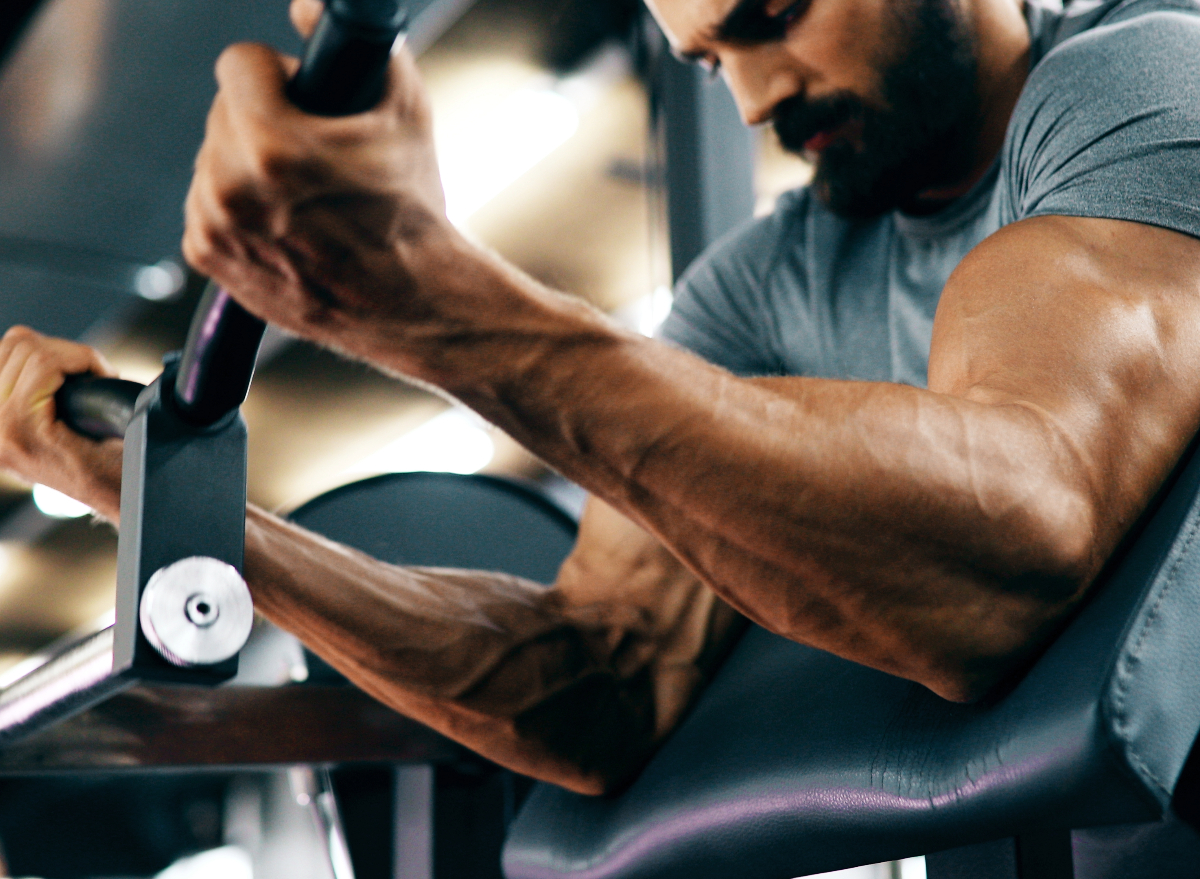
Maintaining an active lifestyle is essential for good health, but when it comes to fitness, it’s easy to get caught up in bad habits that can do more harm than good—especially as you get older. From overworking yourself to neglecting proper warm-ups, you may be making several common mistakes when it comes to fitness. That’s why Eat This, Not That! spoke with certified experts who share 18 exercise habits that completely destroy your body. By avoiding these habits and incorporating alternative exercises into your routine, you’ll skyrocket your chances of staying healthy and active well into your 30s, 40s, 50s, and beyond.
Whether you’re a seasoned athlete or just starting, read on to discover which fitness habits destroy your body. This way, you know what to avoid, which will help ensure you’re on the path to optimal physical health. Here are the most common exercise habits that can completely destroy your body. When you’re finished reading, be sure to check out the 10 Best Exercises To Melt Lower Belly Fat.
You’re overdoing cardio.
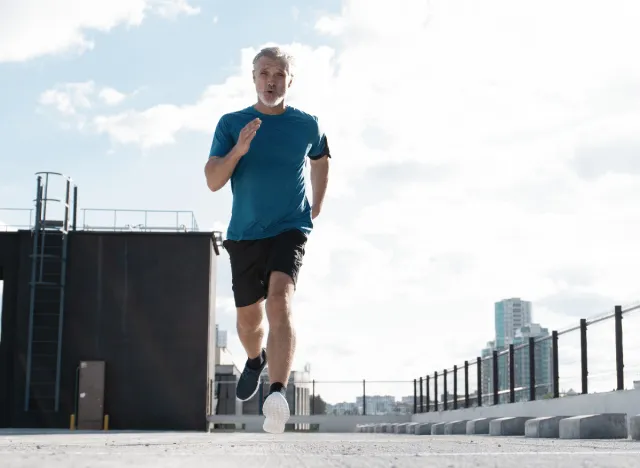
While cardio is excellent for heart health and can help manage weight, too much of it can be detrimental. While most people do not need to worry about too much cardio, if you are consistently doing hours of cardio each day and neglecting other forms of exercise, this is suboptimal for long-term, well-rounded fitness gains for an individual at any age. Balance is key. Incorporate a mix of cardio, strength training, and flexibility exercises into your routine.
You’re neglecting strength training.
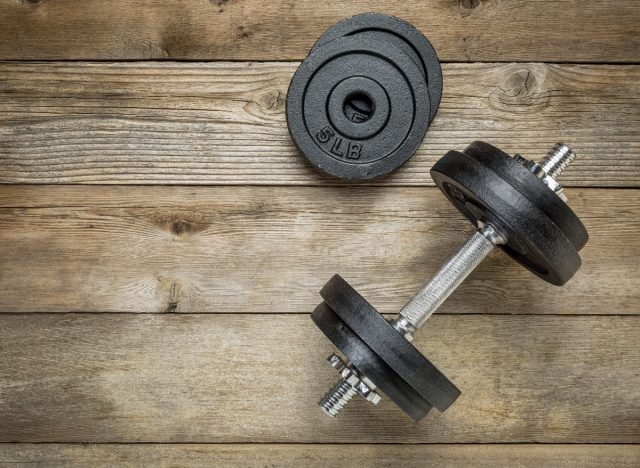
In line with item #1, strength training is an absolute must for ensuring you maintain your muscle tone, balance, bone strength, and overall mobility as you age. Contrary to popular belief, strength training isn’t just about building massive muscles. Neglecting strength training can lead to muscle imbalances, decreased strength, and a higher risk of osteoporosis.
You’re skipping stretching and mobility work.
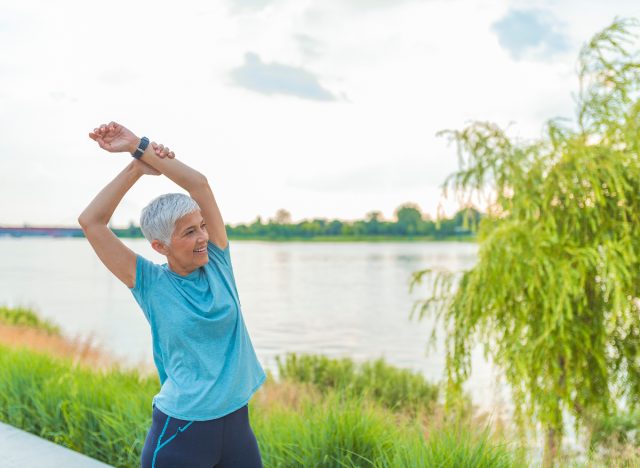
Flexibility and mobility often take a back seat in many fitness routines, but they are essential for maintaining a full range of motion in your joints. Ignoring stretching and mobility work can lead to decreased flexibility, muscle imbalances, and a higher risk of injuries. Incorporating activities such as yoga, foam rolling, general stretching, and exercises using full ranges of motion is a key part of a comprehensive anti-aging fitness program.
You’re not giving your body sufficient time to recover.

While it’s important to stay consistent with your exercise routine, it’s equally important to give your body time to rest and recover. Overtraining can lead to a variety of issues, including decreased immune function, hormonal imbalances, increased risk of injuries, and loss of motivation. Our general recommendation is to take a full day of rest after every two days of working out to ensure you recover and benefit from your workout program.
You’re ignoring pain.
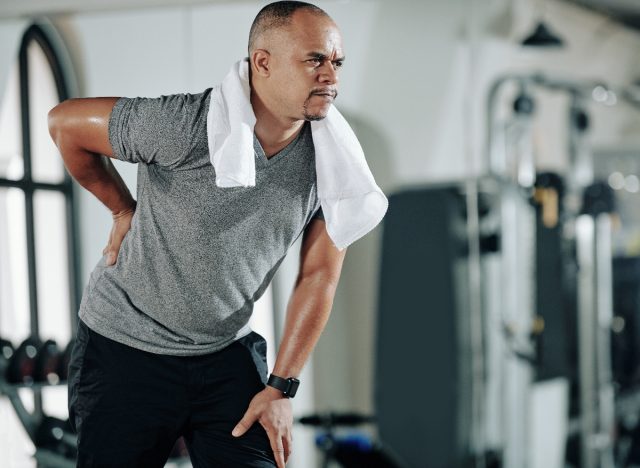
While you can expect a certain level of discomfort when you do resistance training or other forms of intense exercise, pain is a clear signal from your body that something isn’t right. Ignoring pain can lead to serious injuries and long-term damage. If you “feel it” in your knee or lower back when performing a given exercise, stop, check you are doing the proper form, and if the pain persists, consult with a licensed medical professional.
You’re not getting adequate hydration.
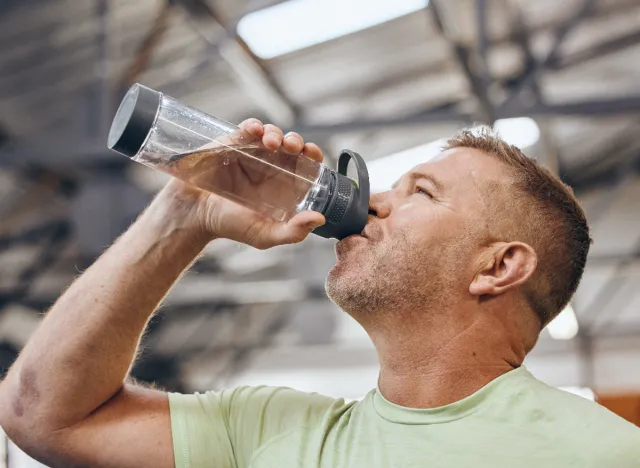
Your body needs water to regulate temperature, transport nutrients, and maintain joint health. Despite this, many of us do not drink enough water each day. Acute effects of dehydration include decreased energy and focus, constipation, lightheadedness, and other discomfort. Chronic dehydration can have devastating effects on your body, including issues with your kidneys and even increased mortality. If you sweat a lot when working out, be sure to replace lost fluids with water or an electrolyte beverage—especially if you tend to eat a diet low in salt.
You’re overemphasizing isolation exercises.
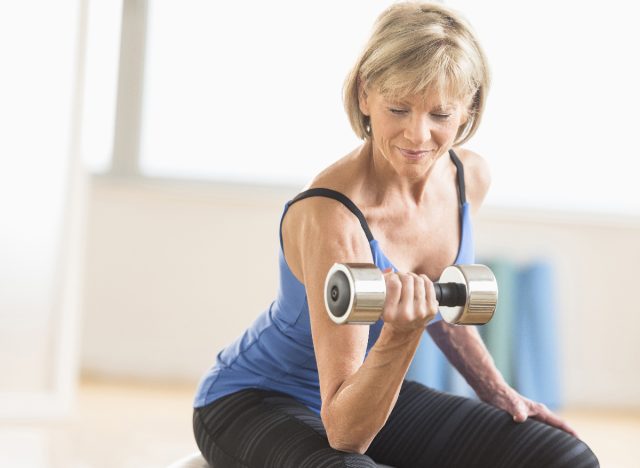
If you do resistance training, it’s important to focus on compound movements that hit multiple muscle groups. Isolation exercises can be beneficial for body sculpting and rehabilitation purposes. However, overemphasizing them at the expense of compound exercises can lead to muscle imbalances and also rob you of the many benefits that come from functional movements like squats, deadlifts, pull-ups, and overhead presses. As a rule of thumb, your resistance workouts should include three to four compound exercises and no more than one or two isolation exercises.
You’re performing excessive high-impact workouts.

High-impact workouts can be tough on your joints—especially if you do them excessively. Instead, mix up your routine with low-impact activities like yoga, swimming, or cycling to reduce the strain on your body over time.
“High-impact activities like running and plyometrics tax your joints over time. Therefore, you want to make sure you get adequate rest between these types of workouts, pay close attention to form, and switch up your workouts frequently to make sure you don’t overdo it with any one muscle group,” advises Rose McNulty, CPT, NASM-certified personal trainer and nutrition coach with Garage Gym Reviews.
You’re doing the same thing all the time.

It’s no secret that repeating the same exercises or workout routine day in and day out can lead to muscle imbalances and boredom. Instead, vary your workouts by trying new activities or switching up your routine every few weeks.
“Make a point to switch up your workouts at least every few weeks,” McNulty recommends. “This goes for those with a penchant for endurance cardio like running or rowing, which can lead to overuse injuries if you do those repetitive motions day in and day out for long periods.”
You’re ignoring nutrition.

“You can’t outwork a terrible diet. And whether your goal is visible abs or overall health, there’s no denying that a bad diet, in the long run, has negative repercussions over time, including a higher risk of metabolic disorders and a host of other health conditions that could otherwise be avoided in many cases,” says McNulty.
No matter how hard you work out, you must fuel your body with the proper nutrients, like protein and carbs, to see your desired results. That’s why eating a balanced diet that includes plenty of fruits, vegetables, lean proteins, and healthy fats is critical.
You’re not warming up or cooling down.

Research shows that skipping a proper warm-up or cool-down can increase injury risk and prolong recovery time. Therefore, spend a few minutes before and after your workout stretching and doing light cardio to prepare your body for exercise and help support recovery.
“Warming up and cooling down help gradually raise and lower your heart rate, which is a plus for your cardiovascular system. A well-planned warm-up also helps get the blood flowing to the specific muscles you’ll be working, which may help mitigate soreness and lower your risk of getting injured,” says McNulty.
You’re not prioritizing sleep.
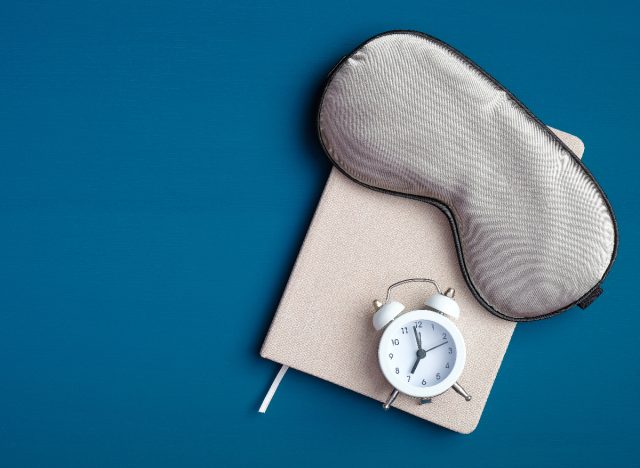
“Sleep is always a crucial part of overall health, and building good sleep habits … will help ensure you recover properly from your workouts and daily life,” says McNulty. “Focusing on sleep during this time can also help curb the risk of sleep disorders in the long run and promote healthy aging.”
By now, we’ve all heard ad nauseam about how essential sleep is for recovery and overall health. Without adequate sleep, your body won’t have the energy it needs to perform at its best, and you may be more prone to injuries and illnesses, according to the National Heart, Blood, and Lung Institute.
You’re focusing on weight over good form.
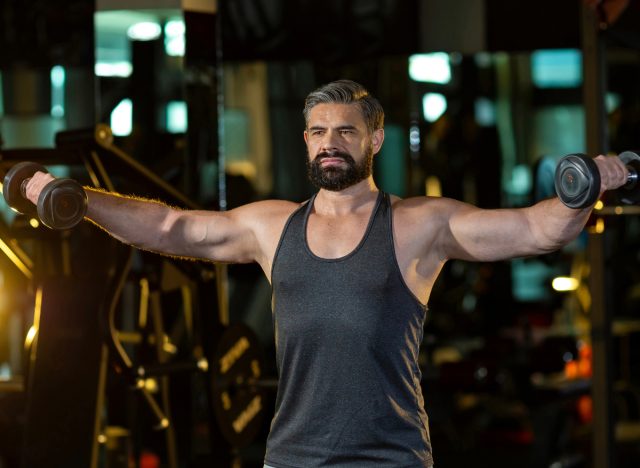
“Lifting with poor form is a surefire way to end up with injuries. As we age, joint health becomes more important than ever, and the movement patterns you develop early on will carry over as the years go on. So even if it doesn’t lead to injury at the moment, getting your body used to poor lifting form can catch up to you once your muscle mass and joints aren’t what they were in your 20s,” explains Kate Meier, CPT, a certified personal trainer with Garage Gym Reviews.
Lifting heavy weights may look impressive, but prioritizing weight over proper form can lead to injuries, muscle imbalances, and damage to your joints.
You’re forcing uncomfortable movements.
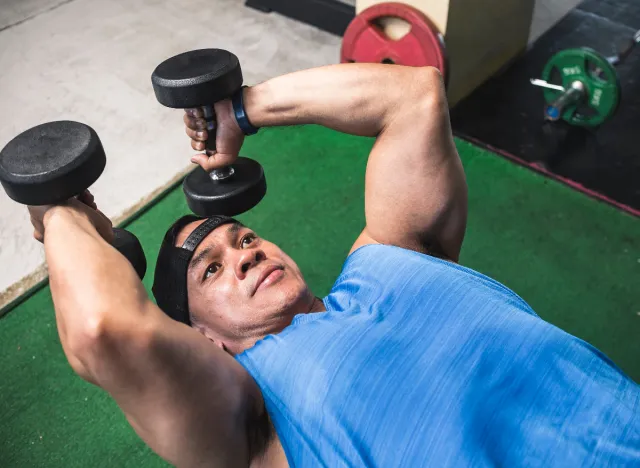
“Similar to having bad form, doing exercises that work for other people, even if they don’t feel right to you, is something you should avoid,” Meier explains. “Just because a specific movement works wonders for someone else doesn’t mean your body is built the same way. You’re better off sticking to movements that feel good to your muscles and joints to prevent excessive wear and tear or injuries.”
While challenging yourself is important, forcing uncomfortable movements can result in injuries and long-term damage.
You don’t have a “maintenance program.”
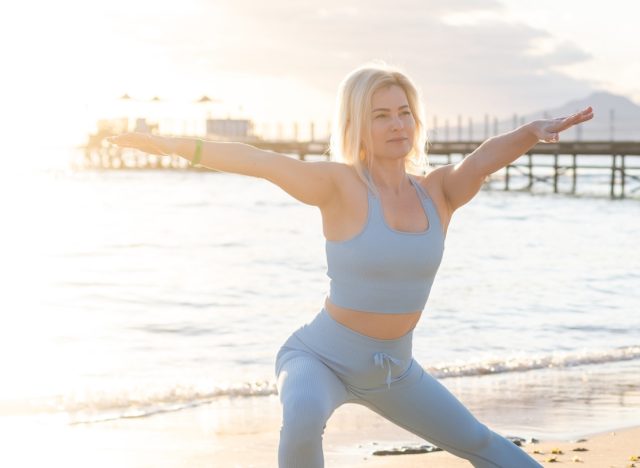
“You can’t put a lot of miles on the car and not take it in for service once in a while,” says RJ Williams, PT, DPT, and Franchise Regional Consultant for FYZICAL Therapy & Balance Centers. “Similarly, if you aren’t performing routine maintenance on your body, milage will pile up, and a breakdown is imminent.”
Having a monthly massage membership would be ideal, but alas, it’s an unattainable luxury for many. Don’t fret, because there are some beneficial things you can do right at home to show your body the TLC it deserves. Williams suggests starting with mobility and soft tissue work.
“Soft tissue work can easily be done with a tennis ball and a few rules,” he explains. “Find a tight spot in your muscles, and use the ball to provide some pressure. An easy example is around the shoulder blades on your back. While standing back up toward a wall, pin the ball between your muscles and the wall. From there, you can take several deep breaths sinking deeper into the pressure, or move your body in small directions for a rolling effect, similar to a bear scratching its back on a tree.”
Next up is mobility. Yoga is such a seamless and incredibly accessible form of training to help boost your mobility and flexibility. You can download a yoga app or surf YouTube for some useful videos that bring you through common poses and flows. “The goal is to do more than just move into a stretching position and hold it,” Williams explains. “We want to slowly move in and out of shapes with relaxed breathing to help remold the tissues and promote future access to these shapes and positions.”
You’re going too aggressively after a long period of doing little physical activity.
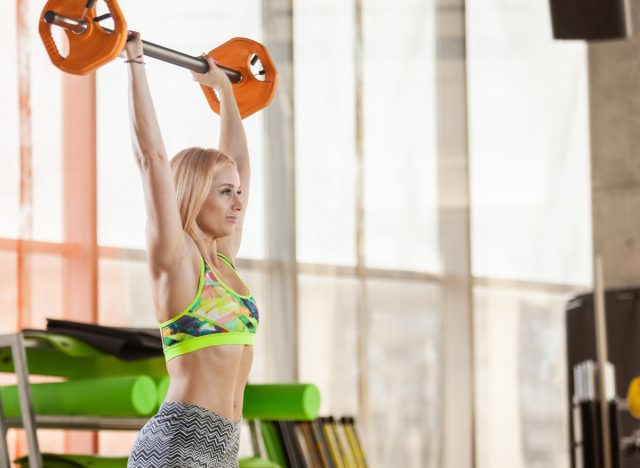
“This can be very tricky to explain because the last thing you want to do is dampen someone’s motivation to get back into fitness,” Williams says. “However, we must respect that if you haven’t been active for very long, your ability to do and perform activities in the manner you previously performed will be diminished.”
Williams goes on to say that the typical “weekend warrior” is likely the one to end up in physical therapy. They might decide to play a fun game of pick-up basketball at a family BBQ only to end up with a torn hamstring. The challenging thing to accept about fitness is you may be perfectly fine doing an exercise or physical activity, but the days that follow can be filled with pain. You’ll recognize this as delayed onset muscle soreness, aka DOMS.
“This is common and should be expected but should subside within 24 to 48 hours. But, because it is a lagging indicator, you won’t know you’ve overdone it until you are multiple days into struggling to move, or worse, you’ve suffered a more severe injury,” Williams cautions. “Our goal in getting back into fitness is to always preserve the ability to train again tomorrow. The results will come in time if we can focus on gaining consistency. As you stack multiple days, then weeks, together you can continue to push into the intensity, but it grows off a solid foundation.”
You’re only using machines.
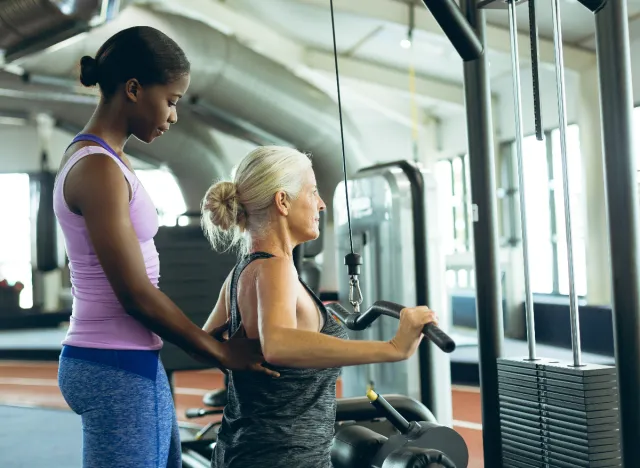
Machines give a false sense of security. They seem safer, but they force you into rigid movements and fail to build the stability, balance, and coordination that comes from non-machine movements.
Always use free weight or bodyweight exercises. Tools like dumbbells, kettlebells, suspension trainers, exercise bands, and stability balls let you perform hundreds of fantastic exercises to build a healthy and fit body.
You’re wearing gym “padding.”
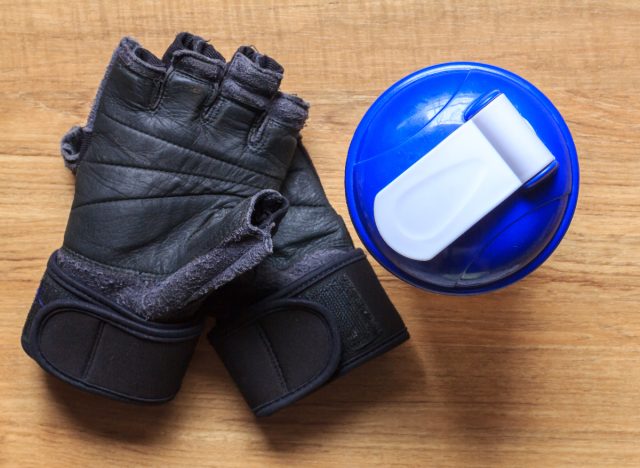
Unless it’s for specific rehabilitation, avoid using gloves, braces, wraps, belts, etc. while exercising. They can limit your movement and ability to sense and feel what you’re doing. For example, gloves seem to prevent calluses, but in reality, (1) you’ll get calluses anyway and (2) you won’t be able to grip your weights correctly, which throws off your technique. If you need those things, either avoid the exercises that necessitate them or do rehab exercises with a certified professional to heal those injuries in the first place.
- Source: https://pubmed.ncbi.nlm.nih.gov/23121352/
- Source: OVERACTIVE VERSUS UNDERACTIVE MUSCLES: WHAT DOES IT ALL MEAN?
- Source: The Effect of Warm-Up and Cool-Down Exercise on Delayed Onset Muscle Soreness in the Quadriceps Muscle: a Randomized Controlled Trial
- Source: What Are Sleep Deprivation and Deficiency?









